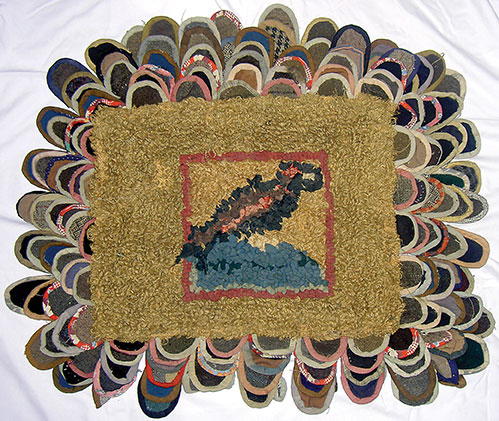Old Rugs Do Talk
Journey through time at the Hooked Rug Museum of North America

One of several mysterious casket rugs, which museum researchers discovered are made from burlap fabric. The lamb's tongue border on this rug was used as a blotter for wiping ink from pen nibs.
The summer of 2013 will be a season of celebration in the village of Queensland, Nova Scotia: after a decade of painstaking work, the world’s first museum of rug hooking will open there on June 15. For the rug hookers who have worked to preserve their craft’s heritage, it has been a long, exhausting process—but the long-lost treasures of rug hooking history it has revealed have been well worth the effort.
The heritage preservation enthusiasts who began the long process that led to the museum coming into being had to start with a sobering initial question: after centuries of neglect in its preservation, did enough of the heritage of rug making remain to warrant a museum at all?
Rug hooking, an art form practiced primarily by women that produced practical objects to be “tramped on,” had long been generally ignored by the art world; even those who did value the craft were discouraged by the lack of information available. Many old rugs were faded, anonymous pieces, with no record of who made them, or what materials and techniques they used.
This article is from the March/April/May 2013 issue. For more information on our issues, check out our issues page.



